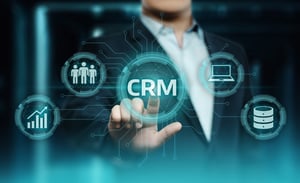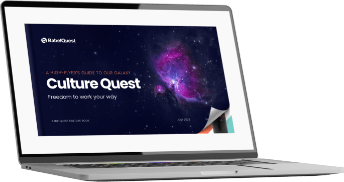A CRM system migration is no walk in the park. In this article, discover how to move from Salesforce to HubSpot.
You know how important it is that all your technology talks, so invite your CRM to the conversation. Easier to use than Salesforce, free (forever!), and designed to make your salespeople’s lives as quick and efficient as possible, HubSpot is fast becoming the CRM of choice for startups and enterprise businesses alike.
But a CRM system migration be daunting. Do you really want to risk moving all your data to a new platform?
If you're thinking of making the switch from Salesforce to HubSpot (or any other CRM for that matter), we'd urge you to consider the following two points first:
- Is it heavily integrated with other systems in your business? If Salesforce is heavily integrated into your ERP or invoicing systems, then it will most likely be an expensive job to remove the system and replace it with something else.
- Is rep adoption really high? You guessed it — the biggest problem with most CRM systems is low rep adoption. If the salespeople are using it, it’s best not to switch.
The good news is, migrating from Salesforce to HubSpot CRM is simple. In fact, there’s a native integration to make the whole process straightforward. Check it out below.
Still on the fence? Discover why people move from Salesforce to HubSpot CRM in the first place.
CRM system migration: how to move from Salesforce to HubSpot

Step 1: Prep work
Come on, you knew there’d be some prep work, right? Preparing for the migration is an important step and shouldn’t be overlooked.
As a good starting point, consult someone with experience migrating CRMs. We always advocate asking for help when you need it, and if you’ve never done a migration project before, a nudge in the right direction can not only set you on the best path but really accelerate your timeline. (Because we just know you’ve been set a tight deadline!)
Need help migrating to HubSpot CRM? Drop us a line!
Prior to the migration, there’s an implementation process that starts with an exploratory phase. This entails a full discovery and analysis of your current processes to determine which are important and enable you to map out business-critical data. Once you’ve got these, you’ll want to share your findings with the appropriate department heads and any other key stakeholders invested in the CRM — just to make sure.
"Other factors to take into consideration are data integrity (such as GDPR) and usability (who needs access to what). "
“Once you’ve mapped everything out, the team doing the implementation will then be able to create a migration plan and set all the steps in motion to move the data over to HubSpot” reveals Eric Murphy, Head of Revenue here at BabelQuest.
Typically, there’s a pilot phase made up of a small group of people who take a portion of data and test it before completely rolling out the CRM. This is to verify that your implementation process works (we have complete faith in you!) and catch any errors before they matter.
Related read: HubSpot CRM best practices and pro tips
Step 2: Reviewing your sales process
Next, review your sales process to accommodate this new source of information. This includes all buyer interactions and the new customer data likely coming your way. For example, you should clean the data so it can be used effectively and run marketing campaigns that test the data so it can be validated against the buyer.
"Technically, the migration isn’t difficult and it doesn’t take long. You simply sync them together. HubSpot can extract all the information out of Salesforce in one go. "
One of the biggest challenges we see businesses face is around their internal alignment. As you can imagine, this impacts everything from ROMI and the sales team’s ability to hit their targets to the overall customer experience. Nobody wins!
If you recognise any of these sticking points, then your migration to HubSpot CRM is the perfect time to address them. Fire up the coffee machine, lure your company’s stakeholders into a meeting room, and don’t let them out again until you can agree between you who your customer is, what they want, and how your business provides them with it. Imagine the data-driven marketing capabilities that could be yours with an integrated CRM behind you?
Preparing for the migration? Find out why so many CRM implementations fail.
Step 3: The migration itself
As a business, you have a unique opportunity when switching from Salesforce to HubSpot CRM because of the native integration. Technically, the migration isn’t difficult and it doesn’t take long. You simply sync them together. HubSpot can extract all the information out of Salesforce in one go.
It’s common to have a hybrid of both HubSpot and Salesforce when going through the migration process. You might have a situation where the sales team has complex reporting requirements and has spent a lot of money building their own dashboards.
If this sounds like you, you may wish to leave Salesforce in place until the migration is complete and use the HubSpot Sales Pro tools (which work in Salesforce) to fill the gaps.
Getting to grips with your next CRM system migration
At first glance with a product demo, Salesforce and HubSpot look quite similar, but the impact they have on your business is very different because of the quality of information contained in each CRM.
As your business scales up, you’re going back to the root of the CRM and what it’s really all about: customer relationships. And that’s got to be a good thing.
For more on how to broach the subject of a new CRM, preparing for the technical migration and maintaining your CRM in the long run, check out our latest ebook, ‘The SMEs Guide to Choosing, Migrating and Rolling out a New CRM’





